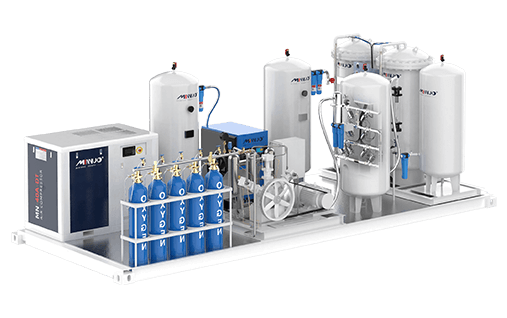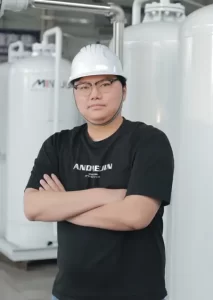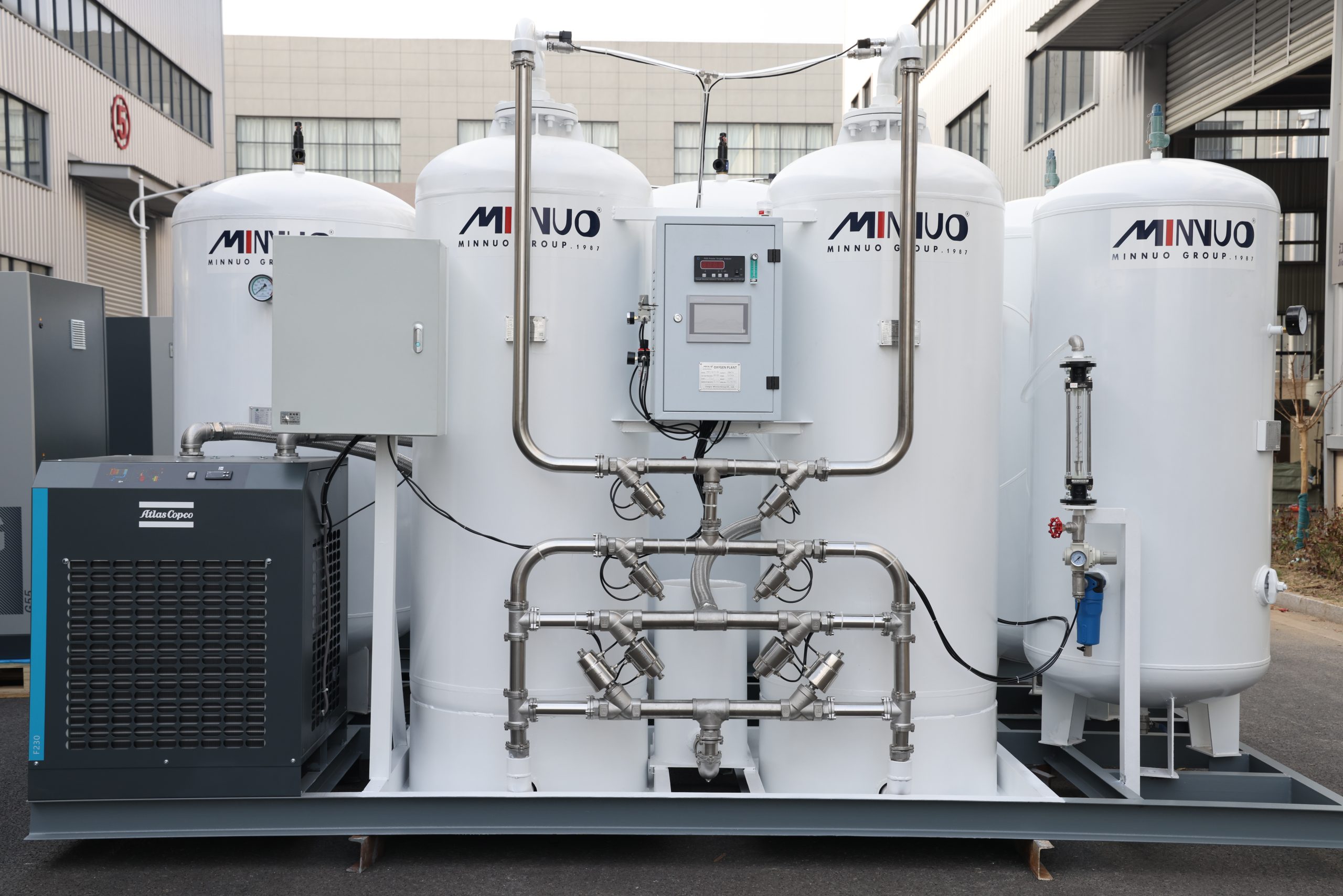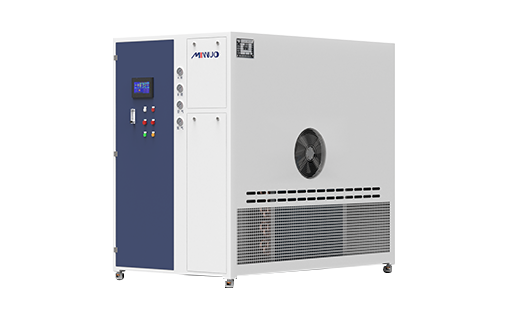PSA nitrogen generator startup precautions are crucial, as proper startup standards directly impact lifespan, nitrogen purity, and production costs—this guide offers a full analysis from principles to troubleshooting for optimal performance.
Before starting up the PSA nitrogen generator, checks must be made on environmental temperature and humidity, ventilation conditions, and the stability of the power and air supply. Mechanical components, electrical systems, and control parameters should also be adjusted to ensure proper operation. Through phased startup and optimized settings, the equipment should be stabilized gradually. Regular maintenance and intelligent operation and maintenance (O&M) can extend the equipment’s lifespan and improve efficiency.

Chapter 1: Environmental Checks Before Startup
1.1 Ventilation and Temperature-Humidity Control
Key Points: The adsorbent (molecular sieve) in a PSA nitrogen generator is highly sensitive to the working environment, and improper temperature and humidity can reduce performance by more than 30%.
- Ventilation Requirements: The equipment should be installed in a dedicated space, away from flammable or explosive gases. The ventilation volume should be at least 1.5 times the air processing capacity of the equipment (e.g., if the production capacity is 10Nm³/h, the ventilation volume should be ≥15m³/h).
- Temperature Specifications:
- Ideal Range: 5 – 40°C (best adsorption temperature range for molecular sieves)
- High-Temperature Risks: When the temperature exceeds 45°C, adsorption capacity decreases, and additional cooling devices are required.
- Low-Temperature Measures: If the temperature is below 0°C, preheat the intake air to above 5°C to prevent pipe freezing.
- Humidity Control: The relative humidity should be kept below 80%. A dehumidifier is recommended, especially in coastal areas.
MINNUO Case: In a Southeast Asian food factory, the molecular sieve became clogged due to a workshop humidity of 90%. After installing a cold dryer, the equipment’s gas production efficiency was restored to 95%.
1.2 Power Supply and Air Supply Configuration
- Power Stability:
- Voltage Matching: Check the equipment nameplate for parameters (e.g., 380V±5%/50Hz), and ensure the three-phase unbalance is less than 2%.
- Grounding Protection: Ground resistance should be ≤4Ω, and an independent grounding pole is recommended (avoid sharing with large motors).
- Lightning Protection: In areas prone to lightning, a surge protection device (SPD) should be installed.
- Compressed Air Pre-treatment:
- Air Source Quality: Strictly follow ISO 8573-1 standards, and it is recommended to install a three-stage filter:
- Pre-filter: Removes particles larger than 1μm (99% filtration efficiency)
- Activated Carbon Filter: Oil mist content ≤0.01ppm
- Precision Filter: Residual oil content ≤0.003ppm
- Supply Pressure: Ensure the compressor’s output pressure is ≥0.7MPa with a fluctuation range of less than ±0.05MPa.
- Air Source Quality: Strictly follow ISO 8573-1 standards, and it is recommended to install a three-stage filter:
Chapter 2: Equipment Pre-Inspection
2.1 Mechanical Components Inspection Checklist
- Valve and Piping System:
- Confirm Valve Status (Check each valve according to the flowchart):
- The intake valve, exhaust valve, and nitrogen outlet valve should initially be in the closed position.
- The drain valve should be manually opened for 10 seconds to remove any accumulated water in the pipes.
- Leakage Testing:
- Soap Solution Test: Apply soap solution to flanges and threaded connections and check for bubbles.
- Pressure Hold Test: Close the outlet valve, pressurize to 0.8MPa, and leave for 30 minutes. The pressure drop should be less than 0.02MPa.
- Confirm Valve Status (Check each valve according to the flowchart):
- Adsorption Tower and Molecular Sieve:
- Molecular Sieve Status:
- The filling volume should be 95% of the tower’s total volume (5% reserved for expansion).
- Powdering Rate Test: Take a 100g sample and sift through an 80-mesh screen. The remaining powder should be less than 3%.
- Tower Pressure Balance: The differential pressure between the twin towers should be less than 0.01MPa. If higher, check if the equalizing valve is stuck.
- Molecular Sieve Status:
2.2 Electrical and Control System Diagnostics
- PLC Self-Test Process:
- After powering up, observe whether the touch screen displays the “READY” status.
- Enter the diagnostic menu and check the solenoid valve response time (Normal value: ≤0.1 seconds).
- Verify the accuracy of the pressure sensor (tolerance: ±0.5% FS).
- Safety Interlock Test:
- Simulate an overpressure alarm (manually trigger the pressure switch and confirm that the equipment shuts down automatically).
- Test the emergency stop button function.
Chapter 3: Parameter Settings and Phased Startup Strategy
3.1 Core Operating Parameter Setting Guide
- Nitrogen Purity and Flow Matching:
| Industry Application | Typical Purity Requirement | Recommended Adsorption Cycle |
|---|---|---|
| Food Packaging | 99.5% | 60 seconds |
| Electronic Component Soldering | 99.999% | 90 seconds |
| Chemical Inerting | 99.9% | 75 seconds |
- Pressure Control Optimization:
- Adsorption Pressure: 0.6 – 0.8MPa (Excessive pressure may cause the molecular sieve to compact, and insufficient pressure affects the gas production rate).
- Equalization Time: Set to 15% – 20% of the total cycle time (e.g., for a 120-second cycle, equalization time should be 18 – 24 seconds).
3.2 Phased Startup Procedure
- Idle Test Phase (30 minutes):
- Turn on the air compressor but do not start the PSA system. Observe pipeline vibrations and noise.
- Record the filter differential pressure (initial value should be <0.05MPa).
- Low-Pressure Circulation Test (Set pressure to 0.3MPa):
- Manually switch the adsorption tower 3 – 5 times and check for valve consistency.
- Collect nitrogen purity data and verify control system response.
- Full Load Operation:
- Step-by-Step Pressure Increase: Increase by 0.1MPa every 5 minutes until the target pressure is reached.
- Purity Compliance: Continuously check for 10 minutes with fluctuations less than ±0.2%.
Chapter 4: Operation Monitoring and Troubleshooting
4.1 Real-Time Monitoring Indicators and Anomaly Thresholds
| Monitoring Parameter | Normal Range | Alarm Threshold | Response Measures |
| Nitrogen Purity | Set value ±0.5% | Below set value by 2% | Check adsorbent or air source quality |
| Adsorption Tower Pressure Difference | <0.02MPa | >0.05MPa | Clean muffler or calibrate sensor |
| Cycle Period | 60 – 120 seconds | <50 seconds | Adjust equalization time or intake flow |
4.2 Common Startup Fault Troubleshooting Manual
- Fault 1: Nitrogen Purity Continually Below Standard
- Possible Causes:
- Molecular sieve poisoning (oil contamination or water saturation)
- Intake air temperature too high (>45°C)
- Solutions:
- Use a dew point meter to detect compressed air moisture content (should be ≤-40°C).
- Disassemble the adsorption tower, sample the molecular sieve, and perform a thermal regeneration test (250°C baking for 2 hours).
- Possible Causes:
- Fault 2: System Pressure Fluctuates Significantly
- Troubleshooting Process:
- Check if the exhaust muffler is clogged (pressure difference >0.1MPa requires replacement).
- Test solenoid valve coil resistance (Normal value: 22Ω ±10%).
- Calibrate the pressure transmitter (4 – 20mA signal corresponds to 0 – 1MPa).
- Troubleshooting Process:
Chapter 5: MINNUO Exclusive Optimization Solutions
5.1 Preventive Maintenance Schedule
| Maintenance Interval | Tasks | Tools and Consumables |
| Monthly | Clean intake filter | Non-woven fabric for wiping + compressed air backflush |
| Every 500 hours | Molecular sieve replenishment (2 – 3% added) | 13X molecular sieve (1 – 2mm particle size) |
| Every 2000 hours | Replace activated carbon filter cartridge | MINNUO original filter cartridge (CF-200) |
5.2 Intelligent O&M Upgrade Plan
- Remote Monitoring System (Optional):
- Real-time transmission of purity, pressure, and flow data to the MINNUO cloud platform.
- AI algorithm predicts molecular sieve lifespan (accuracy >90%).
- Adaptive Control Module: Automatically adjusts adsorption cycles based on gas demand (saving 10 – 15% energy).
Chapter 6: Conclusion
Through detailed pre-checks and timely troubleshooting, the operational stability of the PSA nitrogen generator can be ensured. The optimization solutions provided by MINNUO not only ensure high-efficiency operation but also reduce the maintenance cost and downtime of equipment. Implementing best practices and utilizing intelligent solutions is the key to ensuring stable nitrogen supply in various industrial applications.






 sales2:+86 17506119168
sales2:+86 17506119168

